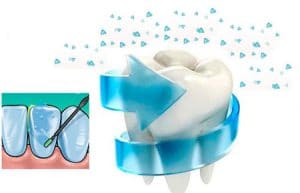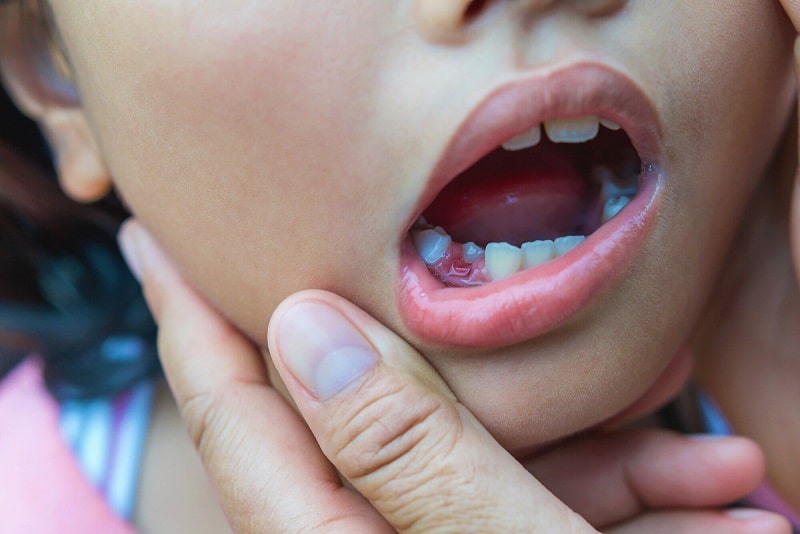Root canal for children is a surgical procedure which removed the diseased pulp from the child’s tooth and the rest of the tooth is preserved carefully for better oral health of the child.
Have you been recently told that your child may have to undergo a root canal procedure? Are you of the opinion that extraction is a better option than a root canal for your kid’s baby tooth?
Dr Pratibha Kukreja-Pandit the certified Pediatric Dentist of Pandit Clinic, Pune has written this blog on root canal for children to help parents understand the importance of the treatment, why a root canal may be a better option than tooth extraction and what to expect from the procedure.
What Is Root Canal For Children?
Is Root Canal Good For Kids?
Many parents believe that it is okay if the child loses a tooth prematurely instead of undergoing a root canal. They think that a permanent tooth will grow in its place later on.
But I would like to clarify that if a baby tooth falls out too soon due to complications like pus, cavity, infection or heavy damage then it may lead to developmental issues in the child.
Some of the issues faced by premature extraction are:
- Slurred speech,
- Unable to chew food properly,
- Wrong alignment of permanent teeth in the future, and
- Crooked or overlapping adjacent teeth.
To avoid these serious dental issues that could hamper the child’s growth and affect his self-confidence, it is sometimes pertinent to save the infected tooth by performing pulpectomy. The root canal treatment allows the tooth the time to fall out naturally at a later stage.
Is It Necessary To Do Root Canal On Baby Teeth?
This is a pertinent question that you must ask your pediatric dentist.
The necessity of a root canal on baby teeth cannot be determined in a blanket manner, the circumstances of every case are unique. Only the pediatric dentists treating the child is fit enough to let you know if the root canal treatment is avoidable or necessary.
How Is Root Canal Diagnosed?
- Generally, the child who is suffering from an infected tooth faces a lot of pain, tooth sensitivity and may even feel inflammation around the tooth.
- The first step is to immediately visit the pediatric dentist for a thorough evaluation.
- The pediatric dentist will conduct a physical examination of the child’s teeth and check for visible signs of infection on the baby tooth.
- The next step is a dental X-Ray of the kid’s teeth. The X-Ray will give clarity on the intensity of the infection, the possibility of how much pulpectomy will be necessary to save the tooth.
- Once the certified dentist for kids concludes that root canal treatment is the way to go, he/she will provide you with a set of instructions that need to be followed in the days leading up to the treatment.
Root Canal For Adults V. Root Canal For Children
I want to inform parents that even though the procedure is pretty similar to adult root canal the major difference is the sealant used. The sealant used in adults is permanent in nature while the sealant used in baby teeth is dissolvable. This means that when the baby tooth will fall off to make way for the permanent tooth, the sealant will be absorbed by the body without hampering the process of tooth-eruption.
How Do Pediatric Dentists Perform Root Canal For Children?
First off, there are three main approaches to Root Canal for children. Depending on the condition of the infection or decay of the tooth, the pediatric dentist will choose the correct approach. The approach will vary from case to case since every child’s problem is unique.
This approach is implemented when there is very little damage to the pulp. Simply put the infection is still in the early stages and has not wreaked havoc on the entire tooth yet. In such a case the dentist for kids will remove the decay without touching the pulp, apply antibiotics inside the tooth and seal it. The direct application of antibiotics on the pulp helps in faster action against the infection.
- Pulpotomy
The second approach to a root canal for children is also popularly referred to as a partial root canal or pulpotomy. The pediatric dentist opts for pulpotomy when the X-Ray of the infected tooth shows that the infection is limited to the upper part of the tooth.
A Pulpotomy involves removal of only damaged/infected pulp from the tooth while keeping the healthy pulp intact. It also demands disinfecting the tooth with the antibiotic and sealing it properly to ensure full stability and protection to the tooth.
- Pulpectomy
A pulpectomy is a full-fledged root canal procedure for children. When the infected tooth is severely damaged the pediatric dentist will opt for a pulpectomy.
This is a complex procedure where the pulp tissue will be carefully and completely removed. The dentist will proceed in disinfecting the tooth and shaping the canals. This procedure requires a high level of expertise and precision. The next part is filling the tooth and sealing it properly. In the last stage of the treatment, a crown will be placed on the infected tooth.
A common treatment protocol for all approaches is the administration of local anaesthesia before the actual procedure. Local anaesthesia is given to make the child comfortable and keep the procedure pain-free.
How Long Does It Take To Do A Root Canal On Baby Teeth?
Root canal is a complex surgical procedure that needs to be performed by the pediatric dentist with utmost care and precision.
Generally, a simple root canal procedures will take anything from 30 minutes to 60 minutes. On the other hand, a complex root canal procedure will take approximately 90 minutes.
Is Root Canal Painful?
Although root canal sounds like a painful procedure, the pediatric dentist takes all steps to keep the child comfortable and pain-free through the process.
The Pediatric Dentist administers local anaesthesia on the tooth to keep it numb for the root canal. The child will not experience pain when undergoing the procedure.
After the procedure pain-management medicines will be given to help in the recovery.
What To Expect When Your Child Is Recovering From The Root Canal?
When your child has undergone root canal treatment they will experience pain in their jaw. Do not worry – this is absolutely normal. The dentist for children will give medicines to help in pain-management and acceleration of recovery. There may be some swelling inside the jaw after the procedure, this is also part of the recovery process.
An extremely vital part of your child’s recovery is clear communication with the dentist involved. Let him/her guide you on what your child can eat, what they can drink and what other measures you can take as parents to help in the recovery process.
Bring your child for a follow up on time and follow all the instructions given by the pediatric dentist. Most of all, ensure that you keep your kid’s spirits uplifted throughout the recovery. A happy patient recovers faster!
Thank you for reading this blog!
In case you have any more queries on this topic you can get in touch with me – Dr Pratibha Kukreja – Pandit through panditclinicindia@gmail.com or book an appointment via +91 88059 80048 to resolve all your doubts.
You Might Be Interested In

How Fluoride Can Prevent Cavities In Kids
Fluoride is a naturally found mineral that plays an important role in keeping the teeth enamel safe and preventing cavities. Children with fluoride deficiency are

A Guide to Dental Care for Children and Adults with Cerebral Palsy
Hi everyone! I’m Dr. Pratibha Pandit, a pediatric dentist and the Chief Dentist at Pandit Clinic, Dentistry for Children, Teens and Special Needs in Pune.

Dental Emergencies
Call us +91 7888229284 Home Pediatric Dentistry Dental Emergencies We at Pandit Clinic are at the forefront of dealing with dental care emergencies. Call us

Pediatric Dental Treatments Under General Anaesthesia
Call us +91 7888229284 Home Pediatric Dentistry Paediatric Dental Treatments Under General Anaesthesia Pandit Clinic, Pune’s best Paediatric Dentistry practice led by Dr Pratibha Kukreja








